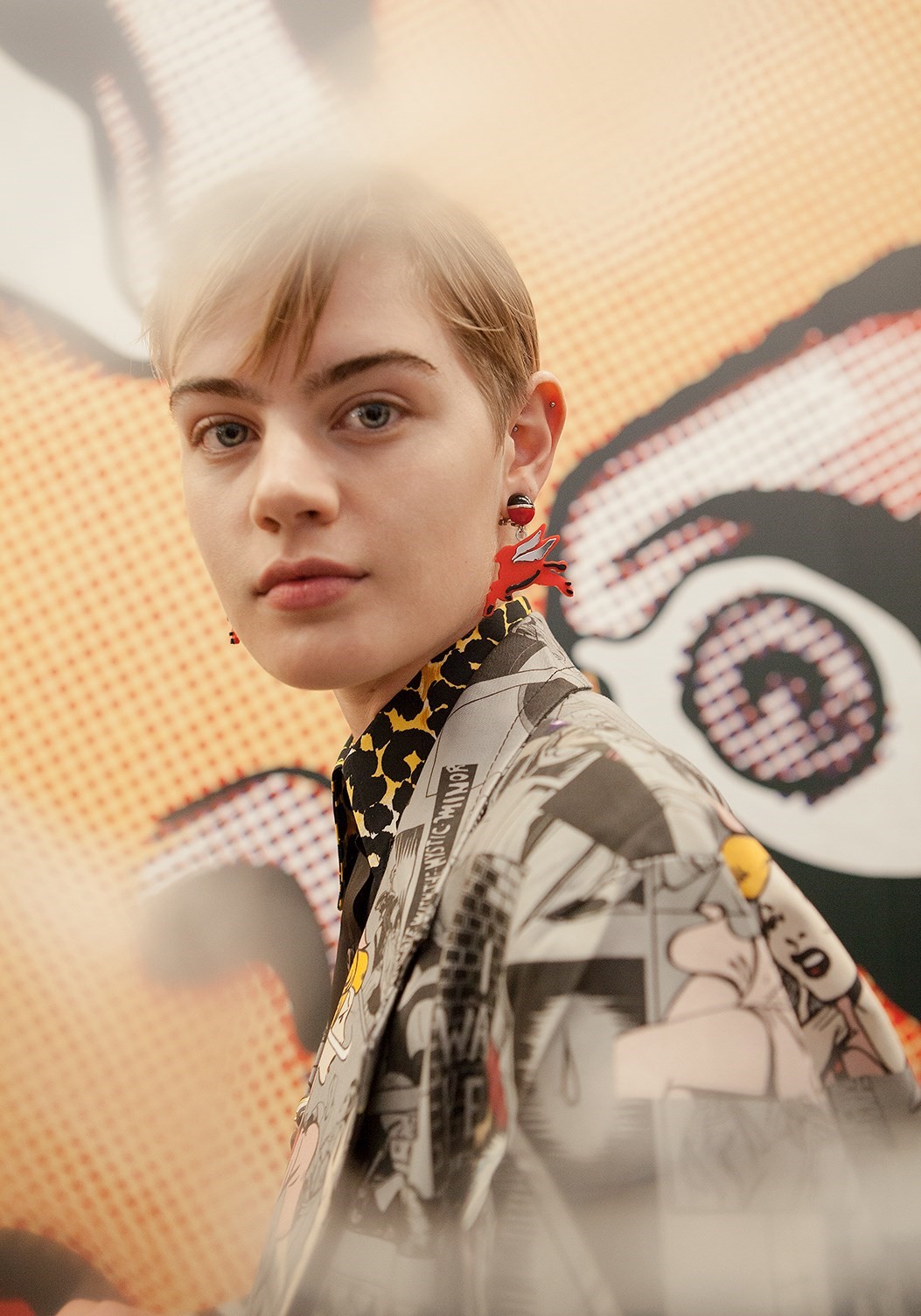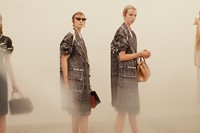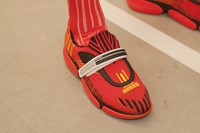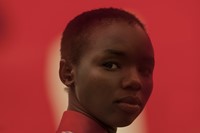Backstage at the Prada show in Milan the canapés – something of a legend in their own right, not least because they are so purposefully bizarre – this time took the form of foie gras studs. Far from being random – and this too is well known – they provided a key to the proudly confrontational collection that had just been shown. Punk in spirit – Miuccia Prada preferred the words “combative” and “militant” she later said – a more precious, metal version of this small, pyramid-shaped design appeared across all manner of accessories, leather jackets and overcoats. The latter were reminiscent of those that a young woman might buy in a charity shop although suffice it to say she’d be lucky to find anything quite that desirable there. Still, their oversized and determinedly masculine silhouette was suggestive of being borrowed – or most likely just stolen – from a boyfriend, father or grandfather’s wardrobe.
For some time now – and, it might be argued throughout her career – this hugely influential designer has explored and discreetly undermined every aspect of bourgeois dress – for men and women, girls and boys – as well as many of the classic staples of French haute couture. She understands all of this better than most having grown up in a well-heeled environment in the same city and even the very apartment she lives in today. As a fully fledged member of the Italian Communist party, Miuccia Prada, it is regularly reported, wore Yves Saint Laurent couture. And that is nothing if not testimony to her profoundly unconventional and willfully contrary spirit.
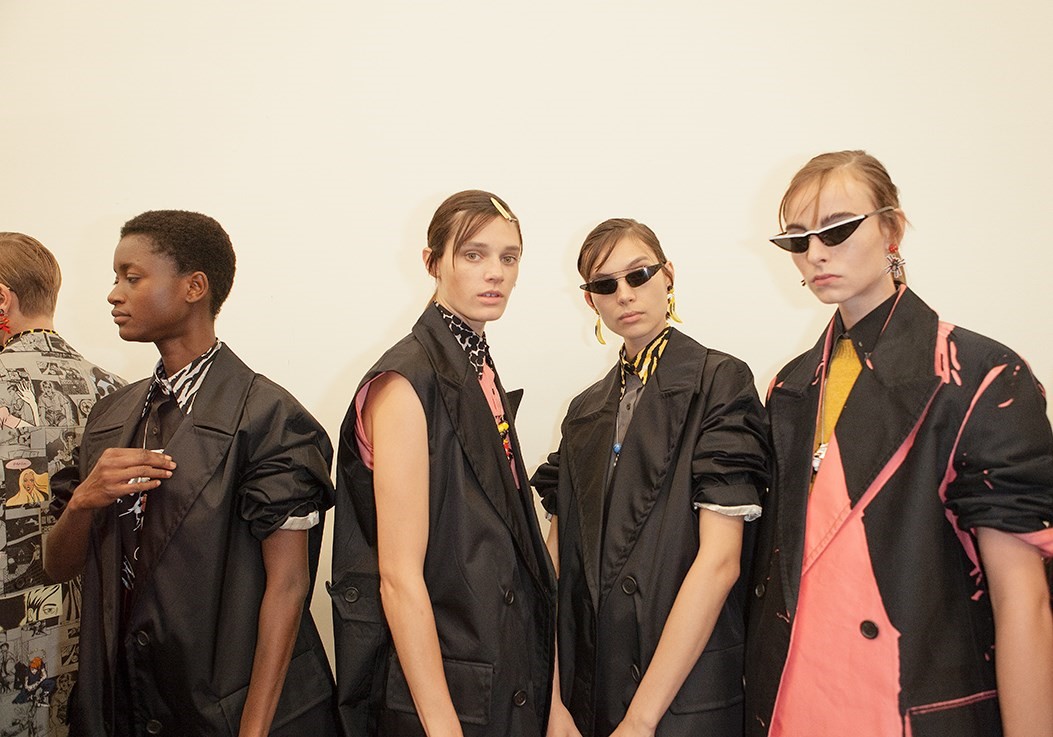
And so said studs replaced an hitherto ongoing flirtation with fluttering (and flirtatious) feathers. The designer was expressing her more transparently rebellious side, the side, perhaps, that led to her studying mime at the Piccolo Teatro (she chose to do that because it is “really weird”) despite her parents’ wishes that she join the family business immediately. Then, as now, she lives by and upholds feminist values, in person and through her work: she is one of very few of her contemporaries able to use the word without making other women cringe. The Prada woman is not arm candy.
The backdrop to the runway was a woman’s take on the comic strip art that covered the walls for the men’s collection shown in the same space in June. It was designed by Rem Koolhaas’ OMA. Here were images of women, drawn by women: evocative, provocative, brilliant.
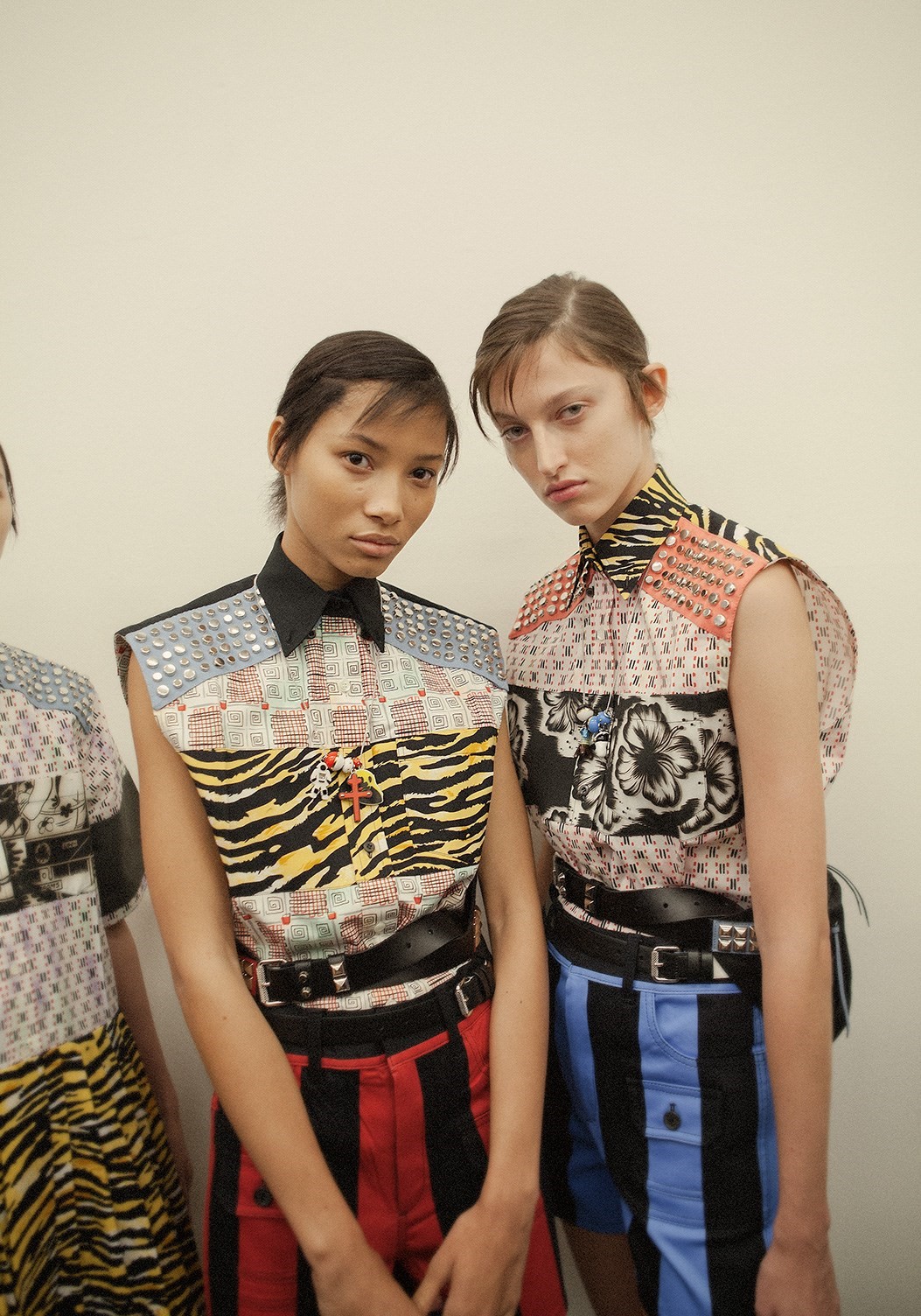
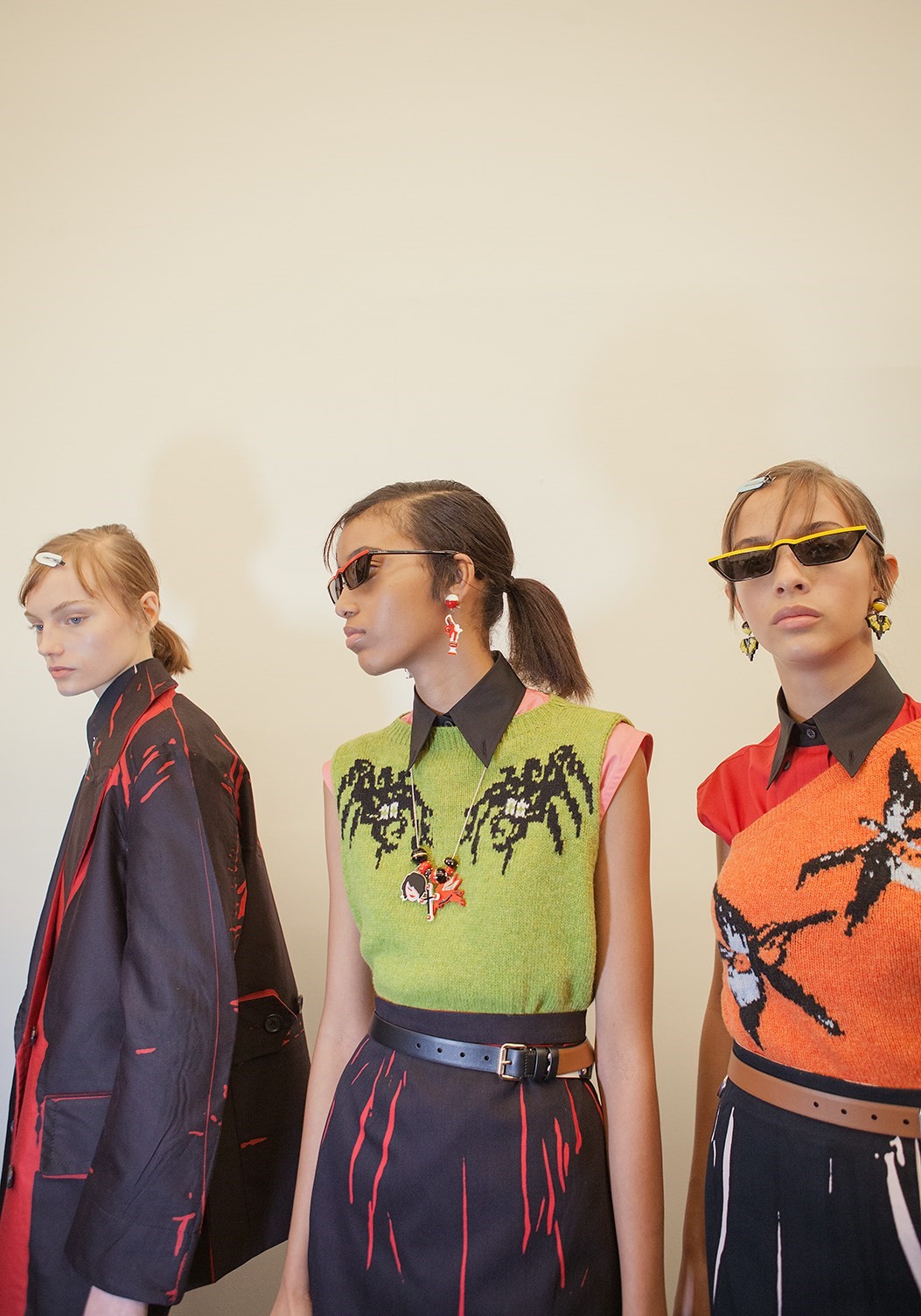
Prada’s research team gathered together the work of female artists from the 1930s to the present day and Miuccia Prada herself edited them down to just eight contemporary names including Brigid Elva, Joëlle Jones, Stellar Leuna, Natsume Ono, Emma Ríos, Trina Robbins and Giuliana Maldini and pulled from the archive of Tarpé Mills. One particular vintage frame read: “…queste femministe sono della isteriche insoddisfatte!... tutte lesbiche..! …tutte puttane..!” There was a sense of irony to the words, of course, but, given the Trump administration’s pro-life stance, the sentiment is perhaps not as anachronistic today as, to the liberal-minded at least, it might at first glance seem.
“Wonder Woman, no; Angela Davis, yes” – Miuccia Prada
Significantly, the characters in question were not the female superheroes that, having been appropriated by Marvel et al, hardcore comic strip devotees might not unreasonably argue, have been sanitised and glamorised where once they were underground and politicised. Wonder Woman, for example, didn’t get a look in. “Wonder Woman, no; Angela Davis, yes,” Miuccia Prada confirmed. “There were so many. I chose the ones that fit my ideas of what a young, combative, militant woman should be. I wanted multiple personalities and to see the human side, the simple side, the underestimated side of women. I chose women who were real, more normal, maybe not beautiful, not superheroes.”

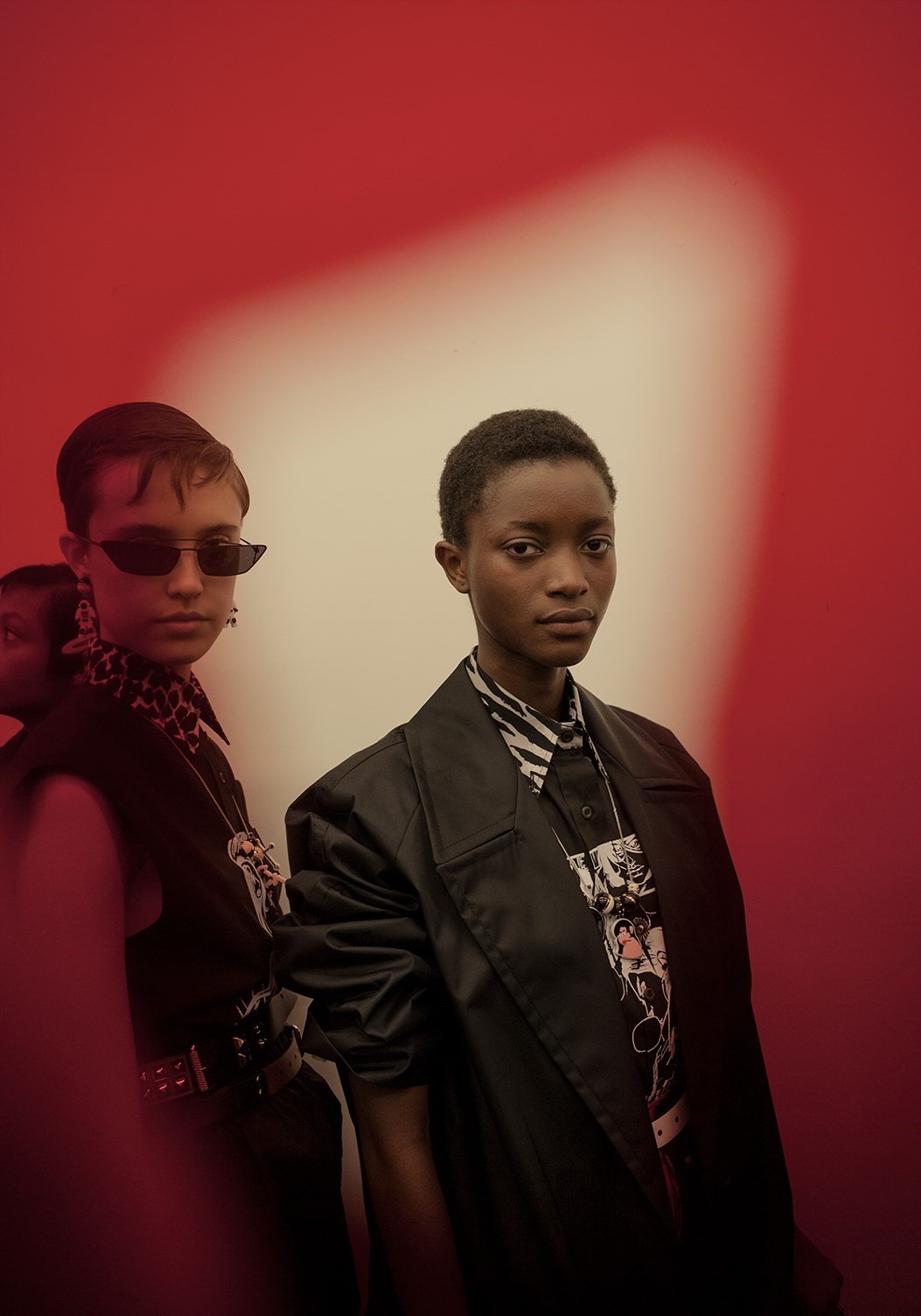
This, it almost goes without saying, was just the sentiment behind the punk movement: even the most apparently unremarkable girl – or boy – next door could transform herself into a fierce and fabulous being with hair, make-up and clothes. It’s a deeply democratic point of view. And Prada’s women this season were very fierce and fabulous indeed.
There was a youthfulness to the whole that suggested rites of passage, an exploration of gender that saw the designer’s current heroine – or anti-heroine – questioning her gender identity, dressed as she was in striped school uniform shorts, knitted tank tops in violent shades of green, lemon and flame and crawling with insects, those masculine jackets and coats. Sometimes, though, a pink and gold brocade bustier would be wrapped around her striped shirt, or her animal and graphic print dress with its prim pointed collar buttoned right to throat would be finished with a full skirt in that same rich, rosy fabric. It was worn over skinny black trousers just in case anyone might think, even for a second, the woman wearing it was dressing to impress anyone other than herself. Easy access? Fuck you. Alongside the studs, meanwhile, came tangled clusters of brightly coloured stones and paillettes and cut out, patched and pieced illustrations of women including – yes – Angela Davis. Haute customization. Nailed.
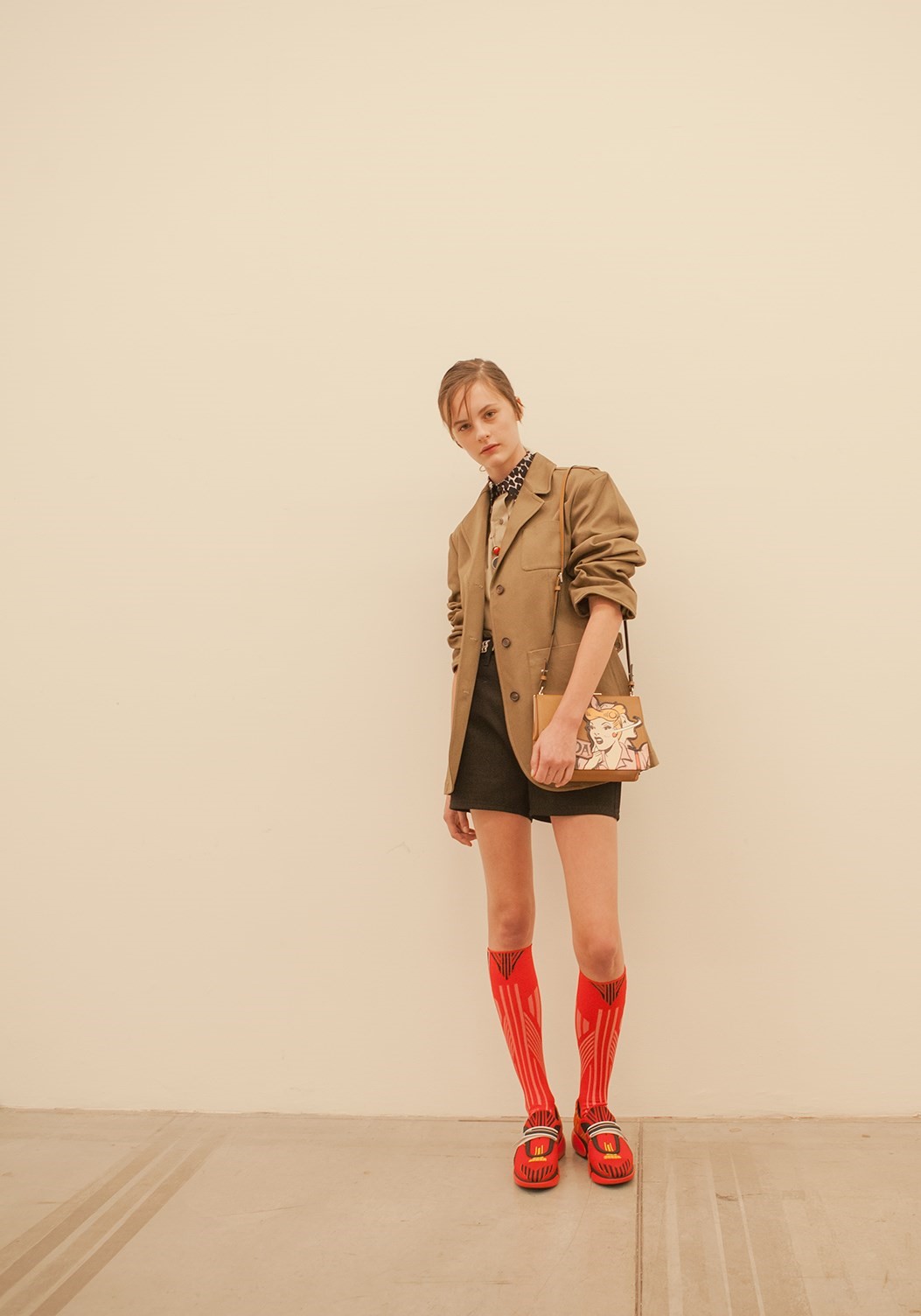
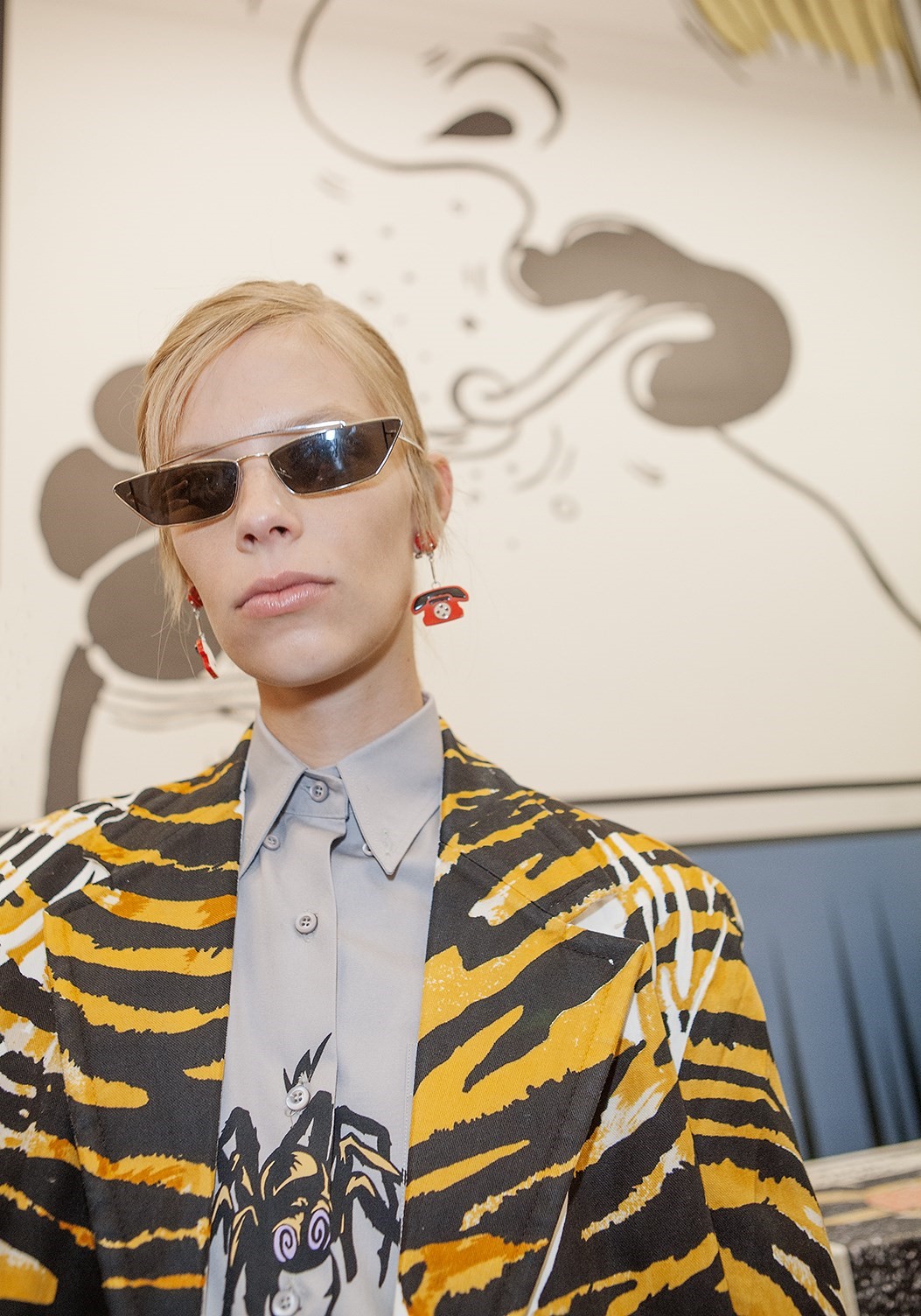
Then there were the prints, more comic strips and a warped herringbone design among them. In a world where digital technology dominates, at Prada garments were screen-printed flat in their entirety meaning that any creasing resulted in negative space, a disruption that was disorienting: deliberately difficult to read. A large part of the collection, Miuccia Prada said by way of explanation, was designed in the first place in white: “like a white canvas and over that we printed colours. On the white canvas we printed my ideas, the clothes were a canvas for thought.”
“On the white canvas we printed my ideas, the clothes were a canvas for thought” – Miuccia Prada
On models’ feet were flat, studded sandals, neoprene, rubber-soled slippers in sporty primary shades or printed kitten-heeled courts sprouting polka-dotted silk or blue and white-striped cotton bows and more shiny stones, many of them worn with knee-high socks. Round their necks were enamelled bananas, crucifixes and baubles, from spooky to sweet.
Occupying a strange space somewhere between fantasy and reality: “The whole problem is how to be strong but not lose your dream, your sexiness, your glamour,” Miuccia Prada concluded. “These women are going to fight for themselves, as women, and they have their own objective.”
